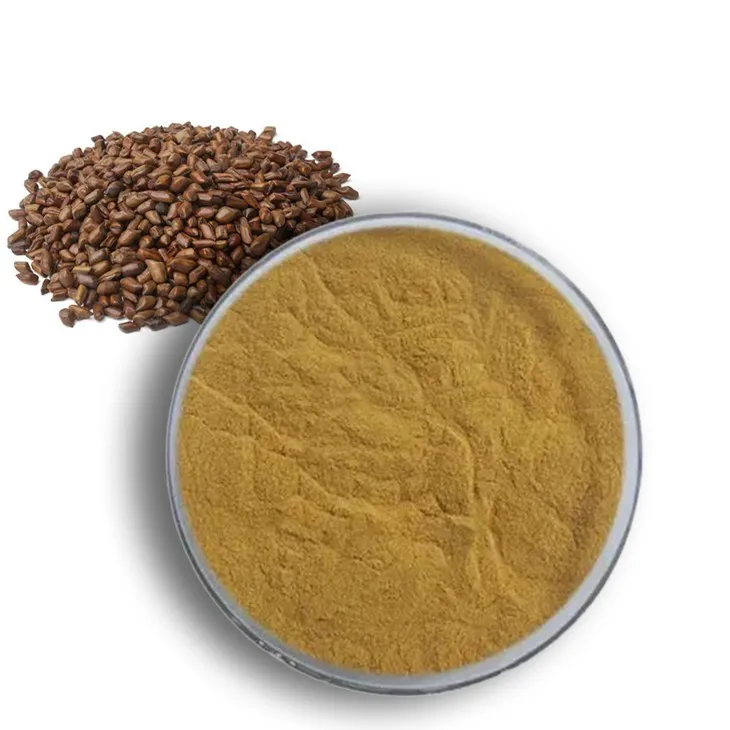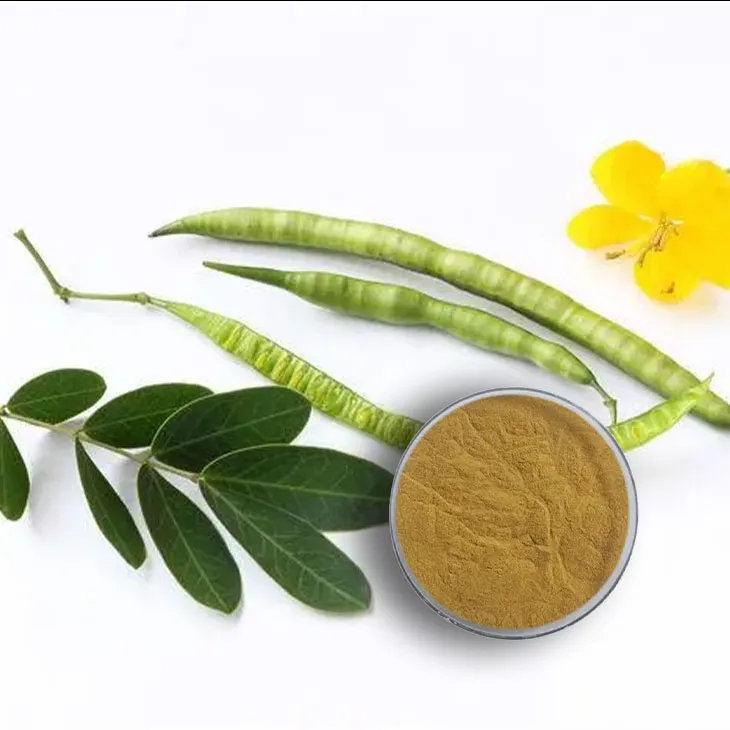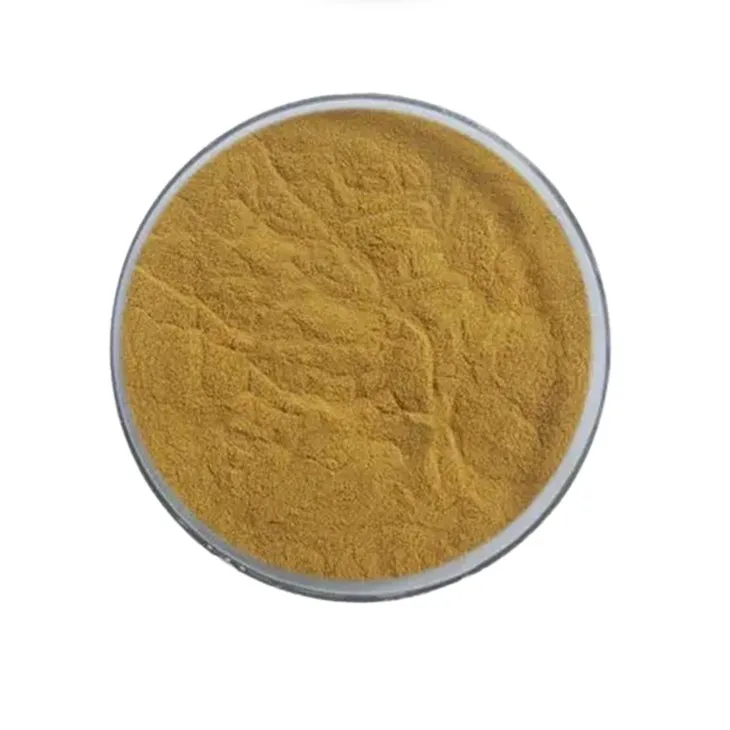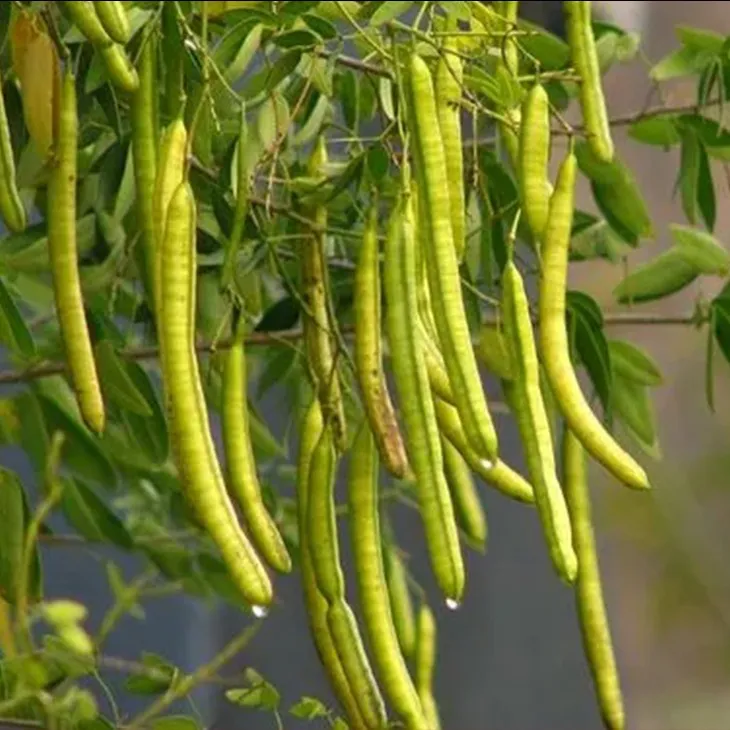- 0086-571-85302990
- sales@greenskybio.com
How to Extract Cassia Seed Extract from Plants?
2024-11-27

1. Introduction
Cassia seeds are known for their rich content of various bioactive compounds. These compounds have shown potential in multiple fields such as medicine, health - care products, and cosmetics. Efficient extraction of Cassia Seed Extract from plants is thus of great significance. This article aims to comprehensively discuss the extraction process, covering aspects from plant selection to the influence of extraction conditions.

2. Selection of Cassia Plants
The quality of the cassia plants is the foundation for obtaining high - quality extract. When selecting cassia plants, several factors need to be considered:
2.1. Species
There are different species of cassia plants. Some species may have a higher content of the desired bioactive compounds. For example, Cassia obtusifolia and Cassia tora are commonly used species for extraction. Researchers need to identify the species with the most suitable chemical composition for their specific extraction purposes.
2.2. Growth Conditions
The growth conditions of cassia plants can significantly impact the quality of the seeds.
- Soil quality: Well - drained, fertile soil can promote the healthy growth of cassia plants. Nutrient - rich soil can lead to higher accumulation of bioactive compounds in the seeds.
- Climate: Cassia plants generally thrive in warm and sunny climates. Adequate sunlight exposure can enhance photosynthesis, which in turn affects the biosynthesis of bioactive substances in the plants.
- Altitude: Different altitudes may also influence the characteristics of cassia plants. Some studies suggest that plants grown at certain altitudes may have unique chemical profiles.
2.3. Maturity
The maturity of cassia seeds is crucial. Fully matured seeds are more likely to contain a higher concentration of bioactive compounds. Immature seeds may lack the complete development of these valuable substances. Therefore, it is essential to harvest cassia seeds at the appropriate time to ensure the quality of the extract.

3. Solvent Extraction
Solvent extraction is one of the most commonly used methods for extracting Cassia Seed Extract. Different solvents can be selected based on the solubility of the target compounds.
3.1. Ethanol as a Solvent
Ethanol is a popular choice for several reasons:
- It has a relatively good solubility for many bioactive compounds present in cassia seeds, such as flavonoids and phenolic acids.
- Ethanol is a relatively safe and environmentally friendly solvent compared to some other organic solvents. It is also relatively easy to obtain and handle.
- It can be easily removed from the extract through evaporation, leaving behind the desired bioactive compounds.
3.2. Other Solvents
Besides ethanol, other solvents can also be considered:
- Hexane: It is mainly used for extracting lipid - soluble components in cassia seeds. However, hexane has some safety concerns due to its flammability and potential toxicity, and more careful handling is required.
- Acetone: Acetone can dissolve a wide range of organic compounds. But like hexane, it also has some safety and environmental issues that need to be addressed.

4. Influence of Extraction Conditions
The extraction conditions play a vital role in obtaining a high - quality Cassia Seed Extract. Key factors include extraction time, temperature, and pressure.
4.1. Extraction Time
Extraction time is an important parameter.
- If the extraction time is too short, the solvent may not have enough time to fully dissolve the bioactive compounds from the cassia seeds, resulting in a low - yield extract.
- On the other hand, if the extraction time is too long, it may lead to the extraction of unwanted impurities, or in some cases, degradation of the target bioactive compounds.
- Typically, a series of preliminary experiments are carried out to determine the optimal extraction time for a specific extraction system. For example, when using ethanol to extract cassia seeds, the extraction time may range from a few hours to several days depending on other conditions.
4.2. Extraction Temperature
Extraction temperature also has a significant impact.
- An increase in temperature can generally accelerate the diffusion rate of the solvent into the cassia seeds and the dissolution rate of the bioactive compounds. However, excessive temperature can cause the degradation of some heat - sensitive bioactive compounds.
- For example, when using ethanol extraction, a moderate temperature range (such as 40 - 60°C) may be suitable for most bioactive compounds in cassia seeds. But for some more sensitive flavonoids, a lower temperature may be preferred to ensure their integrity.
4.3. Extraction Pressure
Extraction pressure can affect the extraction efficiency.
- In some extraction methods, such as supercritical fluid extraction which may use substances like carbon dioxide under high - pressure conditions, pressure can significantly influence the solubility of the target compounds. Higher pressure can increase the density of the supercritical fluid, enhancing its solubilizing power.
- However, in traditional solvent extraction methods, pressure may not be as crucial as in supercritical fluid extraction. But still, in some cases, applying a certain pressure (such as in a pressurized extraction vessel) can improve the contact between the solvent and the cassia seeds, thereby increasing the extraction efficiency.

5. Other Extraction Methods
Besides solvent extraction, there are other extraction methods that can be used for cassia seed extraction.
5.1. Supercritical Fluid Extraction
Supercritical fluid extraction has some unique advantages.
- When using supercritical carbon dioxide as the extraction medium, it has good diffusivity and solubility for the target compounds in cassia seeds. It can penetrate into the cellular structure of the seeds more effectively compared to traditional solvents.
- The supercritical fluid can be easily removed from the extract by simply reducing the pressure, leaving behind a pure extract without the need for complex solvent removal processes.
- However, supercritical fluid extraction requires relatively high - end equipment and strict operating conditions, which may limit its widespread application in some small - scale or resource - limited situations.
5.2. Microwave - Assisted Extraction
Microwave - assisted extraction is a relatively new extraction method.
- It utilizes microwave energy to heat the solvent and cassia seeds simultaneously. The microwave - induced heating can cause rapid and uniform heating within the extraction system, which can significantly reduce the extraction time compared to traditional solvent extraction methods.
- However, the microwave power and irradiation time need to be carefully controlled. Excessive microwave power or long irradiation time may lead to overheating and degradation of the bioactive compounds.
5.3. Ultrasonic - Assisted Extraction
Ultrasonic - assisted extraction is also an effective method.
- Ultrasonic waves can create cavitation bubbles in the solvent. When these bubbles collapse, they generate intense local shock waves and high - temperature and high - pressure micro - environments. These effects can enhance the mass transfer between the solvent and the cassia seeds, facilitating the dissolution of bioactive compounds.
- Similar to microwave - assisted extraction, the ultrasonic power and extraction time need to be optimized to ensure the quality of the extract while maximizing the extraction efficiency.
6. Purification and Concentration of the Extract
After the extraction process, the obtained extract usually needs to be purified and concentrated to obtain a high - quality final product.
6.1. Filtration
Filtration is a common initial purification step. It can remove large particles, such as plant debris and undissolved solids from the extract. Different types of filters can be used depending on the size of the particles to be removed. For example, a filter paper or a membrane filter can be employed.
6.2. Centrifugation
Centrifugation can be used to further separate the extract from smaller particles or impurities that are not removed by filtration. By applying centrifugal force, the denser particles will sediment at the bottom, and the supernatant can be collected as the purified extract.
6.3. Concentration
Concentration of the purified extract is often necessary.
- Evaporation under reduced pressure is a common method for concentration. By reducing the pressure, the boiling point of the solvent is lowered, which allows for efficient evaporation of the solvent without causing excessive heat damage to the bioactive compounds.
- Another method is freeze - drying. Freeze - drying can preserve the bioactive compounds better as it involves freezing the extract first and then removing the water or solvent by sublimation under vacuum conditions.
7. Conclusion
In conclusion, the extraction of cassia seed extract from plants is a complex process that involves multiple steps and factors. The selection of high - quality cassia plants is the starting point. Different extraction methods, such as solvent extraction, supercritical fluid extraction, microwave - assisted extraction, and ultrasonic - assisted extraction, each have their own characteristics. The extraction conditions, including extraction time, temperature, and pressure, need to be carefully optimized to obtain a high - quality extract. Finally, purification and concentration steps are essential to obtain a final product suitable for various applications in medicine, health - care products, and cosmetics. Understanding and controlling these aspects will contribute to the efficient and effective extraction of cassia seed extract.
FAQ:
What are the key factors in the extraction of cassia seed extract?
The key factors in the extraction of cassia seed extract include the selection of high - quality cassia plants. Also, factors like extraction time, temperature, and pressure are significant. Different extraction methods, such as solvent extraction (using solvents like ethanol), also play important roles in obtaining a high - quality extract.
Why is the selection of cassia plants important for extraction?
The selection of cassia plants is important for extraction because high - quality plants are more likely to contain a greater amount of bioactive compounds. These compounds are what we aim to extract in the form of cassia seed extract. If the plants are of low quality, the quantity and quality of the extract may be compromised.
How does solvent extraction work in the extraction of cassia seed extract?
In solvent extraction for cassia seed extract, an appropriate solvent like ethanol is used. The solvent helps to dissolve the bioactive compounds present in the cassia seeds. This allows for the separation of these compounds from the rest of the plant material, and then the solvent can be removed (usually through evaporation) to obtain the concentrated cassia seed extract.
What role does extraction time play in getting a high - quality cassia seed extract?
Extraction time is crucial in obtaining a high - quality cassia seed extract. If the extraction time is too short, not all of the desired bioactive compounds may be fully extracted from the cassia seeds. However, if the extraction time is too long, it may lead to the extraction of unwanted substances or degradation of the bioactive compounds, thus affecting the quality of the final extract.
How do temperature and pressure affect the extraction of cassia seed extract?
Temperature and pressure can significantly affect the extraction of cassia seed extract. Higher temperatures can often increase the solubility of the bioactive compounds in the solvent, which may speed up the extraction process. However, excessive heat may also cause degradation of some compounds. Appropriate pressure can also enhance the extraction efficiency by promoting better contact between the solvent and the plant material, but incorrect pressure levels may lead to inefficiencies or equipment damage.
Related literature
- Efficient Extraction of Bioactive Compounds from Cassia Seeds: A Comprehensive Review"
- "The Science behind Cassia Seed Extract: Plant - Based Extraction Methods and Their Optimization"
- "Advances in Cassia Seed Extract Extraction: Role of Solvents, Time, Temperature, and Pressure"
- ▶ Hesperidin
- ▶ citrus bioflavonoids
- ▶ plant extract
- ▶ lycopene
- ▶ Diosmin
- ▶ Grape seed extract
- ▶ Sea buckthorn Juice Powder
- ▶ Beetroot powder
- ▶ Hops Extract
- ▶ Artichoke Extract
- ▶ Reishi mushroom extract
- ▶ Astaxanthin
- ▶ Green Tea Extract
- ▶ Curcumin Extract
- ▶ Horse Chestnut Extract
- ▶ Other Problems
- ▶ Boswellia Serrata Extract
- ▶ Resveratrol Extract
- ▶ Marigold Extract
- ▶ Grape Leaf Extract
- ▶ blog3
- ▶ blog4
- ▶ blog5
-
The best lemon juice powder in nature.
2024-11-27
-
Organic Vitamin K2 Powder Suppliers
2024-11-27
-
Bulk purchase of L - tyrosine.
2024-11-27
-
Vitamin K2 Manufacturers
2024-11-27
-
100% Pure Natural Rutin.
2024-11-27
-
Chinese Citrus Bioflavonoid Suppliers.
2024-11-27
-
Dandelion Root Extract
2024-11-27
-
Genistein
2024-11-27
-
Scutellaria Extract
2024-11-27
-
Camu Camu Extract
2024-11-27
-
Rose Hip Extract
2024-11-27
-
Oat Straw Extract Powder
2024-11-27
-
Passionflower Extract
2024-11-27
-
Quercetin
2024-11-27
-
Pueraria Lobata Extract
2024-11-27
-
Pomegranate Extract
2024-11-27





















